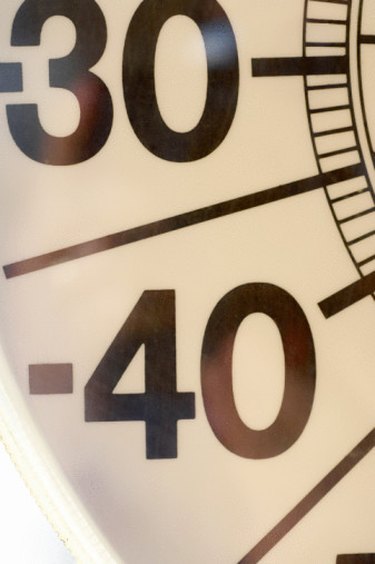
When it comes to computer hardware, cooler is always better. It is highly unlikely that you will ever have to worry about minimum safe temperatures unless you are working in an extreme environment, such as outer space, the ocean floor or Antarctica. Maximum temperatures vary by component. Check the technical specifications for your hardware for actual safe minimum and maximum temps. As an example, nVidia graphics cards are rated for a maximum operating temperature of around 105 degrees Celsius or 221 degrees Fahrenheit.
Step 1
Start SpeedFan.
Video of the Day
Step 2
Review the temperatures listed. The Readings tab will give you a list of internal temperatures gathered from the internal temperature sensors in your system. SpeedFan can also monitor and adjust fan speeds for fans connected directly to the motherboard. Change which temperatures are visible in the Readings tab by pressing the "Configure" button. You can select or deselect the temperatures you want to monitor.
Step 3
Look at the icons next to the temperature readings. Green check marks mean that the component is running at a safe temperature. A blue down arrow means that the component is running cooler than normal or is decreasing in temperature. A red up arrow means that the temperature of that component is rising. A flame icon means that the component is running above normal temperatures.
Step 4
Compare the temperature readings to the safe minimum and maximum temperatures for your hardware. If the hardware is running within safe parameters, you can ignore the SpeedFan icons. That said, running at temperatures near safe maximums for any length of time can shorten the life of your components.
Step 5
Compare temperatures over a length of time with the Charts tab. Select the component you want to chart from the list in the pane below the black chart area. This will give you a good idea of the range of temperatures your hardware experiences over time, which is a better measurement than static, single-moment readings.
Video of the Day